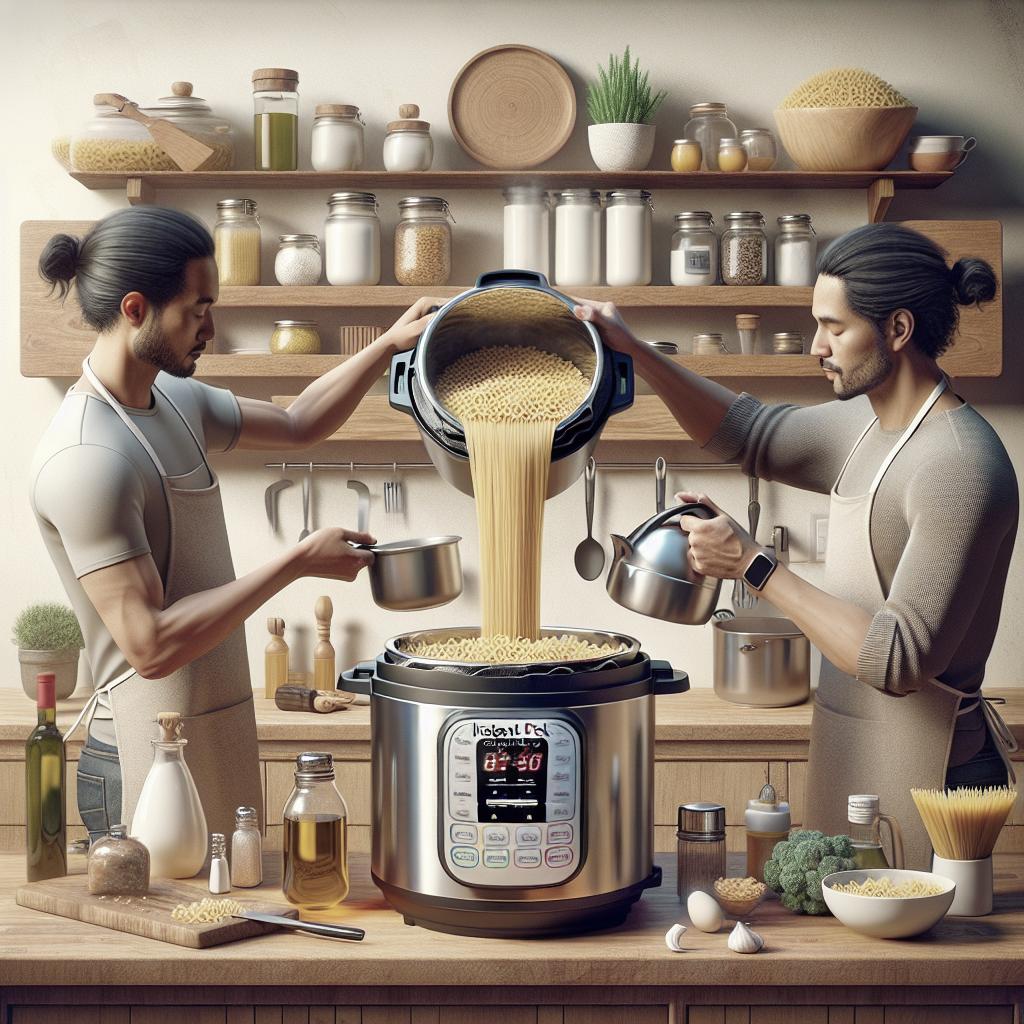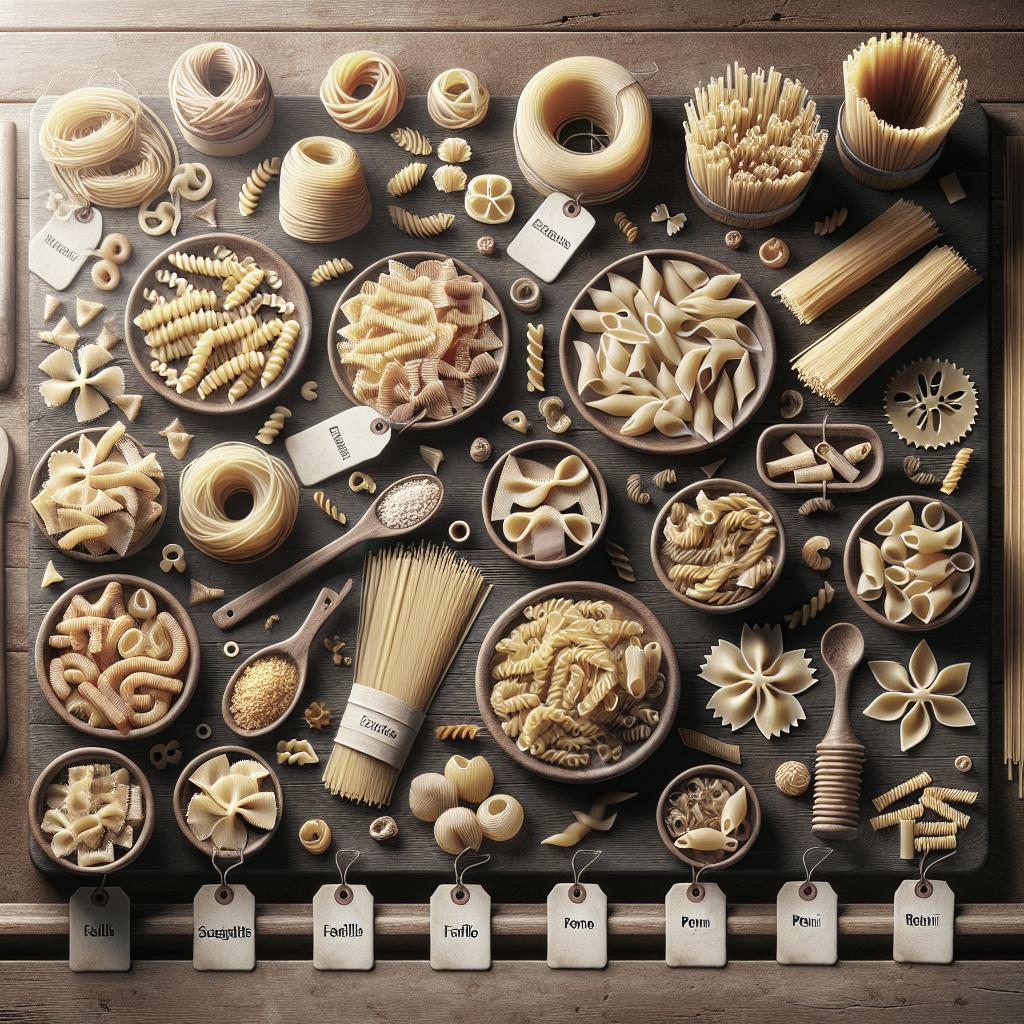“`html
How to Cook Pasta in the Instant Pot
Cooking pasta is often seen as a straightforward task, but using an Instant Pot can revolutionize this process. This sleek device not only saves time but also enhances flavor and texture. In this guide, we’ll walk you through a comprehensive process for cooking pasta in an Instant Pot, covering essential equipment, ingredients, and step-by-step instructions. Furthermore, we’ll dive into the nuances of types of pasta suitable for pressure cooking, determine appropriate cooking times, explore water measurements, and learn the significance of using the Quick Release function. By mastering these elements, you’ll be able to achieve perfectly cooked pasta every time, with the convenience that the Instant Pot offers.
How to Cook Pasta in the Instant Pot
Equipment
To cook pasta in an Instant Pot, you will need a few pieces of essential equipment. First and foremost, you’ll need the Instant Pot itself. Ensure that your pressure cooker is in good working condition, and consider using a 6-quart model, which is perfect for most pasta recipes. Additionally, a wooden spoon or a sturdy spatula can be handy for stirring the pasta and mixing in ingredients effectively.
Another important tool is a measuring cup, essential for accurately determining the amount of water and pasta needed. For those who prefer precision, a digital scale can ensure you have the exact measurements needed. Finally, have a colander on hand for draining excess water and a ladle for serving the pasta once it is cooked to perfection.
Ingredients 1x 2x 3x
The key to a delicious pasta dish lies in its ingredients. Basic pasta recipes require dry pasta of your choice, water, and a pinch of salt to taste. Depending on the recipe, you may also need oil or butter to prevent sticking, and optional add-ins such as garlic, herbs, and spices for additional flavor.
If you aim for a meal with more complexity, consider adding protein like chicken or shrimp and vegetables like spinach or bell peppers. Ensure that you adjust the ingredient quantities proportionally depending on your serving size (1x, 2x, or 3x) to maintain the balance of flavors.
Instructions
Start by adding the pasta to the Instant Pot, followed by the required amount of water—generally just enough to cover the pasta. Add a tablespoon of oil or a knob of butter, and season with salt. Stir briefly to ensure the pasta is submerged in water.
Secure the lid and set the Instant Pot to manual pressure cook mode. Adjust the timer according to the type of pasta used, keeping in mind it requires about half the time specified on the pasta packaging. Once cooking is complete, employ the Quick Release method to carefully release the pressure.
After the pressure has fully released, open the lid and give the pasta a generous stir. If desired, incorporate additional ingredients like cheese, fresh herbs, or pre-cooked vegetables to finish the dish, distribute evenly and enhance the flavor.
Notes
When using mayonnaise-based sauces or delicate herbs, add them after pressure cooking to prevent deterioration or curdling. This ensures that flavors are fresh and vibrant. Always keep an eye on the amount of water used, as too much can result in a watery dish, while too little may leave the pasta undercooked.
Remember that different brands of pasta can vary in texture and cooking time. Conduct a test run with small quantities if you’re using a brand that’s new to you, to fine-tune the perfect pressure-cooking time.
Nutrition
Pasta can be a nutritious meal option, especially when whole grain varieties are selected. It provides energy-dense carbohydrates, which are essential for daily energy needs. Adding vegetables, lean proteins, and healthy fats can offer a balanced nutritional profile, supplying essential vitamins and minerals.
If you’re aiming for a lighter version, opt for vegetable-based pastas or explore legume-based alternatives like lentil or chickpea pasta, both of which offer higher protein content and fibers, making them a nutritious choice for health-conscious individuals.
What type of pasta to use
The Instant Pot is versatile enough to accommodate various types of pasta. Shorter pastas, like penne, rigatoni, and rotini, tend to work best as they cook evenly and are less likely to clump or break. Long pasta like spaghetti can also be used, though it’s advisable to break them in half to fit more easily into the pot.
If you’re looking to experiment, consider whole wheat or gluten-free pasta options. These can offer diverse flavors and textures while catering to dietary needs. Just be mindful of their different cooking times as they might require small adjustments for optimal results.
How much time to set on the Instant Pot
Determining the correct cooking time for pasta in the Instant Pot depends greatly on the pasta type. As a general rule, take the recommended cooking time indicated on the pasta package and divide it by half, then subtract an additional minute. This formula tends to achieve al dente results, perfect for most tastes.
For example, if the package states a cooking time of 10 minutes, set the Instant Pot for about 4 minutes. Keep in mind that factors such as altitude, the freshness of pasta, and quantity might slightly alter the outcome, so minor trial and error may be necessary to achieve perfection.
How much water to add to the Instant Pot
Getting the water quantity right is crucial to perfecting pasta in an Instant Pot. Generally, add enough water to cover the pasta by about half an inch (1.3 cm). This allows the pasta to cook evenly without boiling over.
For a more flavorful result, substitute some of the water with broth or add a splash of wine to enhance the pasta’s taste. Remember that liquid volumes also affect cooking time and texture, so ensure not to over or underfill. Experimenting with amounts may help find the ideal balance for your taste preferences.
Using Quick Release
The Quick Release feature is an essential aspect when cooking pasta in an Instant Pot. It allows for the immediate release of pressure after cooking, preventing overcooking and ensuring the pasta remains al dente. This method is particularly important for pasta, as they tend to cook quickly.
To perform a Quick Release, ensure that the knob is switched from the sealing to the venting position immediately once the cooking cycle is complete. Always use caution as hot steam will be expelled during this process. Carefully open the lid once the pressure is fully released to check the pasta for doneness and allows for the incorporation of subsequent ingredients.
Future Prospects
| Aspect | Recommendations |
|---|---|
| Equipment | Use a sturdy 6-quart Instant Pot, measuring cup, digital scale, and colander. |
| Ingredients | Dry pasta, water, salt, optional proteins, and vegetables for enhanced flavors. |
| Instructions | Submerge pasta in water, pressure cook for half the suggested time, quick release, and add seasonings. |
| Nutrition | Opt for whole grain or legume-based pasta to increase fiber and protein content. |
| Pasta Type | Short pastas work best; consider alternative pastas for unique textures. |
| Cooking Time | Divide package time by half and subtract a minute for optimal results. |
| Water Amount | Cover pasta with half-inch water, adjust flavors with broth or wine. |
| Quick Release | Essential to prevent overcooking, perform immediately at cycle end. |
“`


